R & I Grants Program
Mining & Mineral Resources Research and Innovation Initiative
The Mining & Mineral Resources Research and Innovation Initiative provides both seed funding and strategic investments toward fundamental and/or collaborative, interdisciplinary team research and education related to significant or interdisciplinary problems in mineral resources. University of Arizona faculty and staff are eligible.
The program supports initiatives that align with the School mission to transform the way students, professionals, and communities work across boundaries to meet the complex challenges of economically, socially, and environmentally sustainable mineral resources. The School’s scope is to use education, training, research, and community outreach and engagement to encompass responsible and sustainable production and use of mineral resources.
In its first round, following a call for proposals in October 2021, more than $1.4 million of funding was awarded to sixteen projects spanning eleven University departments and affiliated organizations for research and education related to mineral resources. The projects include the entire scope of mineral resources from their natural occurrence to primary production to circular economy, including the life cycle of mining from exploration and discovery through development and production, to closure, reclamation, and repurposing and the associated technical, economic, social, and environmental aspects including public health, policy, law, supply security, and sustainability throughout the entire mining and mineral resources lifecycles. Overview of past funded projects (PDF)
Selected supported research projects
Most people are familiar with the idea of mining, but not may not think much about how water is involved in mine design and the development of minerals for every-day uses. How hydrology and minerals intersect is the topic of a video by members of the UArizona Department of Hydrology and Atmospheric Sciences (HAS) and the Lowell Institute for Mineral Resources.
The team will record industry and academic experts as they discuss topics like the importance of minerals, how water is used in mining, how mines conserve water as a valued resource and how water is managed and monitored to meet safety and environmental regulations.
The team hopes to make the video available to students from 6th through 12th grade and beyond as a way to introduce the concept of hydrology as it relates to Arizona mining.
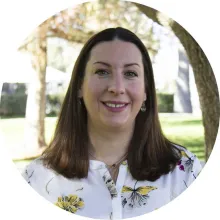
For more information on this project, please contact: Gillian Noonan
Mine tailings contain the waste material from mining operations. They remain managed at retired mine sites because some of its minerals contain toxic elements that can adversely affect environmental and human health if unleashed into the surroundings.
Climatic variation such as annual rainfall and seasonal temperatures affect weathering processes in the tailings, which can change the composition of the materials and potentially expose toxic elements. These climatic forcings vary throughout the western United States.
A University of Arizona doctorate student will receive a stipend to take samples collected from tailings sites at several sulfide ore mines. The student will conduct experiments on these samples to help reveal how weathering caused changes in the geochemical makeup of the material. The student also will study how the changes are mediated by water and gas flows through tailing columns.
Researchers will use the data to create a model that predicts the evolution of mine tailings material based on different climate scenarios. This could help inform companies on how to best manage these structures.
The work complements a larger National Institute for Environmental Health Sciences effort to collect the field samples and characterize them. The institute funded the UArizona effort to do this part of its modeling study.
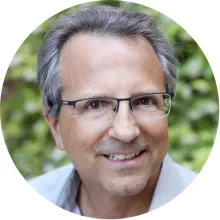
For more information on this project, please contact: Jon Chorover
Some time after a windy day, several mining workers suffered eye injuries. It turns out the wind whipped up contaminants that exposed workers to a safety risk. What if that risk was recognized early so that workers might avoid getting injured?
That scenario is a simple example of what researchers at the UArizona Mel & Enid Zuckerman College of Public Health and School of Information want to explore. They will attempt to show that identifying certain conditions, called leading indicators, could alert a company to an elevated risk of health and safety. This could lead to addressing the risk to reduce injuries or illnesses.
Currently, companies deal with employee health and safety risks by responding to lagging indicators, such as reports of injury numbers, hours lost and worksite hazards. Meanwhile, large sets of data are collected on mine operations, environmental conditions and potential hazards—data that could be parsed into leading indicators.
In this project, researchers will use analytical models, big data and machine learning programs to identify which leading indicators are related to these lagging indicators: eye and hand injuries, sprains and strains, fractures and amputations, fatal injuries, heat stress, noise, exposure to diesel particulates and fatigue.

For more information on this project, please contact: Leonard Brown
Mining is a dusty business. Fine-grained material from hauling, crushing, blasting, transporting and storing rock can linger in the air. These dusts cause several problems, including reducing visibility, creating explosive mixtures and causing health hazards for mine workers and surrounding communities.
Water only temporarily suppresses dust, especially in arid or semi-arid regions like Arizona. Salt-based dust suppressants can damage vehicles, negatively impact soil and aquatic health and may not come from sustainable resources.
UArizona researchers are studying alternatives to existing dust suppressants using nature as inspiration. Evaluating a class of molecules modeled on naturally occurring microbial surfactants (soaps), they hope to identify glycolipids—soaps consisting of sugars and fats—suitable for dust suppression in mining applications. These new dust suppressants are biodegradable and avoid problems other suppressants cause.
With a diversity of bioinspired glycolipid structures available, new agents may be customized for specific types of dust, such as for use to tamp down soil dust or coal dust.
The funding supports graduate students from the College of Engineering and the College of Agriculture and Life Sciences who will perform the research. It also will help purchase an advanced dust monitor to evaluate the performance of different bioinspired glycolipids.
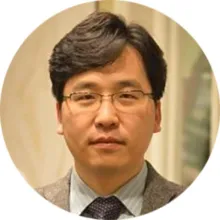
For more information on this project, please contact: Minkyu Kim
The UArizona Center for Environmentally Sustainable Mining works closely with mining industry professionals to identify environmental issues. CESM then develops research projects and educational initiatives that focus on reducing the effects of active and closed mining sites on the environment and surrounding communities.
CESM depends on partnerships with mining companies that provide access, guidance and other support for faculty and student researchers who to do work in revegetation of mining sites, reclaiming mine waste, controlling dust emissions and mitigating erosion of waste materials called tailings, among other subjects.
CESM needs additional support for its various projects. The new funding will allow a research scientist/program coordinator to develop new scopes of work with existing partners and strike contracts with new mining industry partners.
Additionally, this person will expand research translation outreach, including preparing for a fall 2022 conference presentation to federal and state agencies on CESM research related to mine closure.
Funds also will go toward recruiting undergraduate and graduate students for dissertation and thesis research. While most of these student researchers come from the Department of Mining Engineering, the funding will help tap students from other UArizona programs, such as the School of Natural Resources and the Environmental Science department and Chemical and Environmental Engineering department.
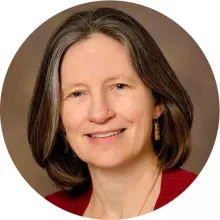
For more information on this project, please contact: Julia Neilson
A successful student of mining engineering, geology or any other study focused on rocks needs to know how to recognize, identify and interpret minerals. Students learn to do this in petrography classes where they use special microscopes.
Unfortunately, there aren’t enough scopes to go around and they are prohibitively expensive. They require in-person work in a classroom or lab. The need to share physical microscopes among several students reduces the time each student can spend studying specimens.
This project aims to start digitizing the UArizona’s massive ores collection that fills three rooms of drawers housing ore deposits from around the world. The funding will support a student research assistant and purchase photography equipment and polished thin sections.
In addition to photographing specimens, the project will develop a virtual ore petrography platform. This website would have a catalog of rocks. Each rock could be examined as a specimen and several polished thin sections under different types of light. Each section will have notes on special features. Videos would allow examiners to rotate the sections 360 degrees to observe mineral optical properties, just as they would do with physical microscopes.
This resource will enhance the online courses that students will attend at the school of mine and mineral resources.
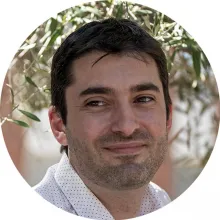
For more information on this project, please contact: Hervé Rezeau
Copper electrowinning extracts the metal from copper oxide ores using electrolysis. That’s a process of using an electrical current to stimulate an acid solution in a tank, which will move copper from a crushed ore slurry to a collection sheet.
The process creates bubbles in the solution that, when they pop, releases a sulfuric acid mist, which is a health risk to mine workers. An economical and efficient suppressant reduces the amount of acid mist, but itself is dangerous to workers who experience long term exposure. It also is volatile and unhealthy for the environment. The anti-mist agent already is banned in Europe and will likely be prohibited in the United States in a couple of years.
Researchers want to develop an environmentally friendly anti-mist agent, but are stymied by the lack of understanding on how the mist is formed. Project funding will pay for a high-speed video camera that can capture the bubbles’ formation, motion and rupture in the acid solution.
Investigation of acid solution samples will describe its properties, including surface tension, viscosity, temperature and pH, as well as characterize it under various conditions.
The team will work closely with Freeport McMoRan to obtain the acid solution from the company’s electrowinning plant.
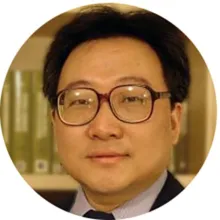
For more information on this project, please contact: Jinhong Zhang
Hyperspectral imaging sensors use infrared light to detect a large range of mineral types and map out how they are distributed in the ground. That would allow mine operators to see where there are minerals like clays and talc that cause major problems in mining. Fine-tuning this hyperspectral technology for the specific needs of mines is the aim of a new consortium of mining industry professionals and UArizona researchers.
While hyperspectral technology is used in other applications like mineral exploration, it’s a new tool for production-level mining. Datasets from the technology are large; translating them into useable information takes more time than what’s available in the fast-moving environment of mining. The consortium will tackle these challenges to develop ways to create a flexible platform that can distinguish multiple closely related mineral species fast enough to be useful in mines and mills.
Project funds will pay for staff and student time to research and test new methods of processing data from hyperspectral scans, as well as improve sensor hardware. It’s anticipated that the success of this initial work will spur industry partners to subscribe to the consortium and fund further research. The consortium is scheduled to launch in summer 2022.
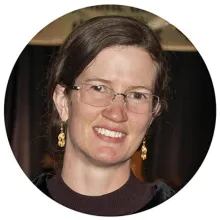
For more information on this project, please contact: Isabel Barton
An analysis of resiliency and vulnerability—how a community withstands and recovers from a damaging situation and how it might become damaged—is a crucial tool for making policy decisions. For rural communities next to active and legacy mining activities, this information can help address land development, sustainable growth and issues of justice, including food deserts, internet access and job opportunities.
The project combines data from state and federal datasets, a UArizona co-created science program called Gardenroots and a community needs and assets survey to create an online platform that policymakers, mining industry officials, researchers and community members can use. HOWL—Health Opportunity Wellness Landscape—will contain maps and other visualizations of how a community’s social, environmental, political and economic conditions have shaped inequities around race, extraction and class. The platform also will reveal community strengths and assets.
The HOWL effort has received previous funding from national and Arizona sources. The initiative funding supported graduate and undergraduate research assistants from the UArizona environmental sciences and computer sciences departments, as well as a multimedia specialist from the university’s Department of Environmental Science. Their work will move HOWL closer to launch, including developing data visualizations and the user interface and finalizing the database.
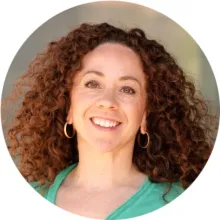
For more information on this project, please contact: Monica Ramirez-Andreotta
Pinal County, located between Pima and Maricopa counties, contains 30 percent of Arizona’s known copper deposits. Yet mining professionals, policy-makers and communities lack the complete picture of its mineral resources because few compiled reference publications exist. Understanding where valuable minerals lay would help inform potential mining operations and guide communities in making land use decisions prior to development.
This project principally focuses on reconnaissance fieldwork collecting samples for developing new data of mineralized areas. An undergraduate student will gain experience with mineral deposits, basics of geologic mapping and recording of geological information.
The work complements an Arizona Geological Survey project funded by the U.S. Geological Survey to compile data for a review publication “Mineral Resources of Pinal County, Arizona.” The USGS grant goes toward curating and compiling existing data, while the UArizona work will develop new data in areas where there are gaps.
That new data—geochemistry, age dates and thin sections—along with the existing data, will give exploration geologists details about mineral deposit type and style. When mining siting grows in Pinal, governments will have information that will guide their community planning.
The breadth of mineral resources from metallic to industrial products, summaries of past geologic work and references to more information are other topics expected in the publication.

For more information on this project, please contact: Carson Richardson
Mining ball mills are huge tumblers with balls inside. As the tumbler turns, the balls grind and crush material to separate ore from rock and other materials. To protect the tumbler from damage caused by the heavy balls, castings of a cast-iron alloy line the inside. The widely used WS-306 alloy for liner castings is abrasion resistant, but improving its wear-life would be beneficial.
Creating a liner casting that lasts longer will save the cost of idle time for installation of replacements and reduces the safety risk to maintenance personnel.
The project continues UArizona’s investigation into finding ways to toughen the alloy for longer life without compromising much of its hardness that provides wear-resistance. Based on previous university research, the project will take the next step and subject the alloy to different heat treatments to see how each alters the microstructure of the material. Understanding this dynamic will help identify manufacturing methods to improve WS-306 both in toughness and hardness.
Funding will support the work of undergraduate and graduate students who will do the research, as well as pay for some lab supplies.

For more information on this project, please contact: David Poirier
Purchase of sophisticated laser equipment will enhance UArizona’s capabilities for state-of-the-art analyses of solids and solutions in the Lowell Institute’s ICP-MS (inductively coupled plasma mass spectrometry) facility.
The NWRFemto ultraviolet femtosecond pulsed laser ablation system by New Wave Research Inc. is unique in the way that it efficiently vaporizes tiny amounts of material for chemical and isotopic analysis.
As the first of its kind located in North America that is devoted to geological and related materials, the system will support faculty and student researchers across several disciplines—economic geology, geometallurgy, archeometallurgy, environmental sciences and gemology. Topics in which the system will help expand knowledge include basic geology and exploration, mineral processing and characterization of manmade materials. Students will have access to key instrumentation and methods as part of their mineral resources education.
This is part of a long-term effort to expand capacity for cutting-edge technology and replace aging instrumentation. As one of a few widely shared UArizona facilities for isotope and chemical analysis, the ICP-MS lab needs continuing staff and operations support. Project funds and matching funds through grants and contracts are working together to generate more than $1 million in buying instrumentation that will sustain and enhance future grant and contract work.
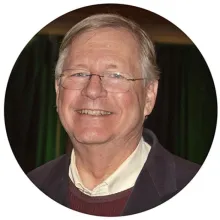
For more information on this project, please contact: Mark Barton
Water and brines used in several industrial operations contain energy-critical metals like rare earth elements and lithium. These metals help drive technologies that fight climate change and create a more sustainable environment. This project investigates ways to get these metals out of contaminated water and brines used in oil and gas recovery, mining operations, geothermal aquifers and seawater desalination.
Project funds support personnel who will research new technology that selectively removes rare earth elements from aqueous sources. This technology is based on rhamnolipids, which are soaps made of sugars and fats. Rhamnolipids bind rare earth elements in solutions containing many metals. Rhamnolipids are made in nature by bacteria, but in this research they are produced synthetically using a UArizona-developed and -patented process.
Researchers will use this proof-of-concept work to apply for grants that will combine this new technology with others that focus on other metals like lithium. The goal is to create a viable sorption technology platform that addresses the entire spectrum of energy-critical metals.
The mining industry could use this platform to harvest metals from mining waste streams. That would reduce the need for hard-rock mining, which greatly impacts the environment and human health. It also would clean waste-stream water for reuse.

For more information on this project, please contact: Raina Mai
The UArizona Superfund Research Center focuses on the human health effects of mine waste contamination, particularly arsenic in mining tailings, the left-over material from operations. This and other toxic minerals can pollute groundwater, leading to exposure by drinking it. Toxin-laden dust from active and closed mining operations is another source of potentially unhealthy exposure.
With regular funding from the National Institute of Environmental Health Sciences, the center combines the research and publishing power of five UArizona colleges: agriculture and life sciences, medicine, pharmacy, science and public health. With active research going on across these disciplines, a single source for mining industry players to access large datasets and parse information would help them share, analyze and test hypotheses stemming from results coming out of the center.
The project supports a software engineer with the center’s data management and analysis core. That person is developing visualization software that will illustrate mining-related datasets on a web application. The center will host the application server as a central location that houses and analyzes data that the center publishes. The project also will develop state-of-the-art software and analytics to combine the findings of research from several scientific research projects into new insights.
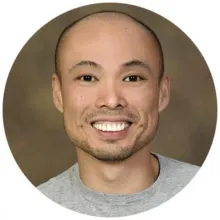
For more information on this project, please contact: Aikseng Ooi

